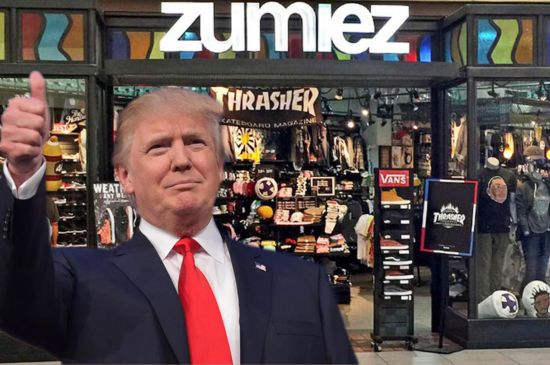
The skateboarding industry, particularly skate shops, skateboard manufacturers, and distributors are feeling the pressure as the Trump administration's recent tariff announcement threatens to slow down sales growth for 2025.
With already tight margins and a challenging economic climate, industry players are scrambling to navigate the shifting landscape.
The Impact on Skate Shops & Manufacturers
The newly imposed tariffs, which include a baseline 10% tariff on goods from all countries, will affect skateboarding companies that rely on imports for essential components like skateboards, wheels, bearings, and apparel.
Manufacturers that have partnered with overseas suppliers are seeing prices rise steeply, particularly on goods coming from China and Vietnam.
Chinese imports, in particular, face a 34% tariff, which is on top of previous increases, while goods from Vietnam now carry a 46% tariff.
For some companies, the result is a spike in production costs that will likely be passed on to consumers.
The tariffs are having a ripple effect through skate shops, where price increases could cause sticker shock for customers already contending with inflation.
For shops that sell boards, gear, and apparel sourced internationally, the sudden price hikes may prove difficult to absorb.
Given that many retailers are already facing tight margins, the added burden of increased tariffs could further squeeze small businesses that operate within this space.
Consumers Can’t Absorb Higher Prices
The tariffs are not just an issue for manufacturers and retailers - they will also directly impact consumers.
The broader retail sector is bracing for a slowdown in 2025, as consumer spending growth is expected to dip below 3%.
For skate shops that rely on seasonal sales and impulse buys, this downturn could be especially damaging.
Navigating the Tariffs
Skateboard manufacturers and distributors are already taking steps to adjust to the new tariff landscape.
Some are working closely with their suppliers to find alternative materials or production methods to mitigate the impact of the increased tariffs.
Others are exploring new shipping routes or looking for domestic manufacturing partners to reduce reliance on overseas suppliers.
While some companies may be able to absorb some of the tariff increases, others will be forced to raise prices, which could affect their competitive edge in the marketplace.
Looking Ahead: Glimmers of Opportunity
Though the tariff situation remains uncertain, there are some opportunities for skate shops and skateboard brands to stay afloat.
This shift in consumer behavior could be advantageous for skate brands that focus on creating immersive, engaging retail experiences to boost foot traffic and conversions.
Moreover, despite the rising costs of decks to $90 and $15 griptape, there is still a growing demand for skateboarding as a culture and activity.
While price increases may deter some budget-conscious shoppers, others will continue to prioritize quality and brand loyalty, providing an opportunity for shops to strengthen relationships with their customer base.
Conclusion
The new tariffs could create a major hurdle for skate shops and manufacturers as they look to grow in 2025.
With rising costs, uncertain consumer spending, and a shifting retail landscape, the skateboarding industry is at a crossroads.
However, by staying flexible, focusing on customer engagement, and exploring new production and distribution models, skate shops can weather the storm and continue to thrive in an increasingly competitive market.
With the right strategies, skate brands and shops may still find ways to adapt, keeping the wheels of the industry rolling despite the challenges ahead.
